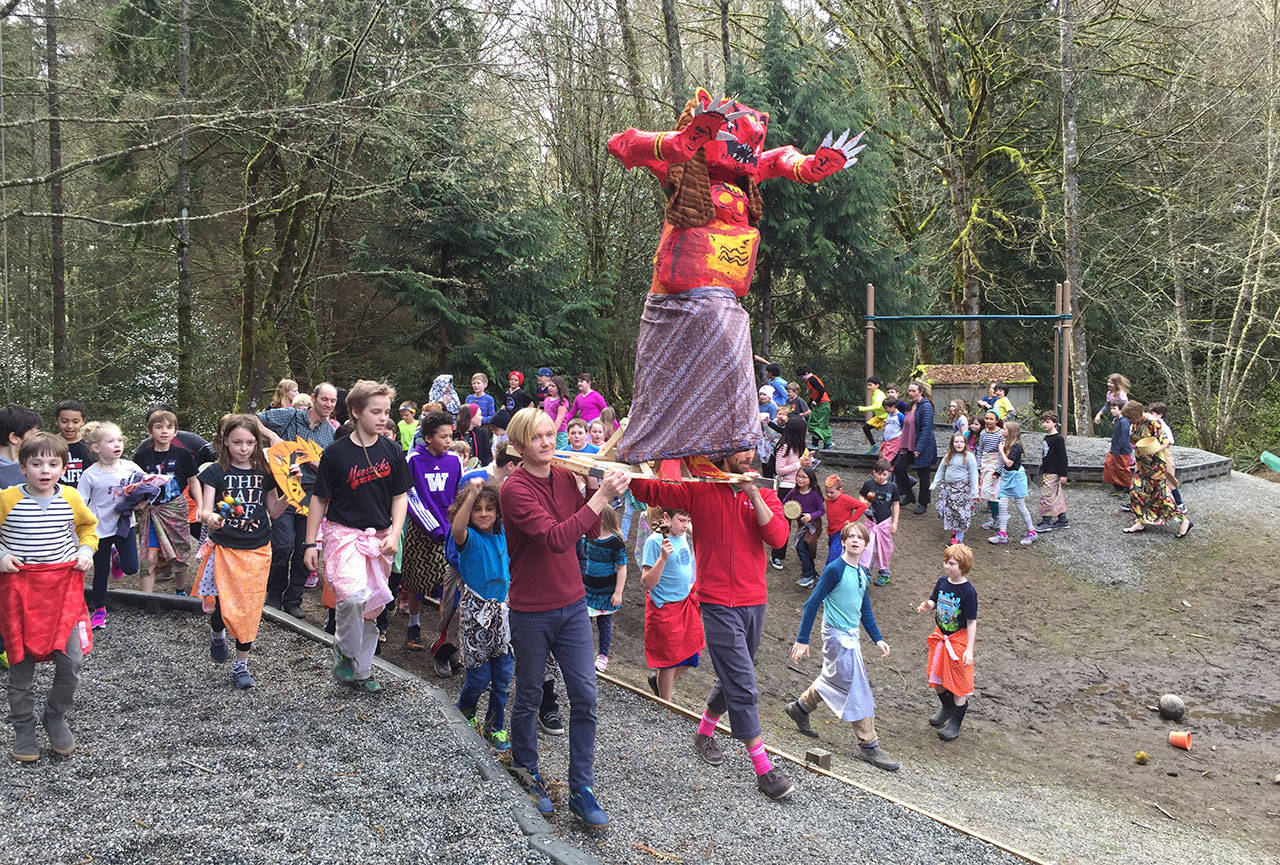“Ogoh-ogoh, agah-agah,” children chanted as they marched in droves behind the effigy of the Balinese demon known as Ogoh-ogoh.
Dressed in brightly colored sarongs, some of the kids pounded drums rhythmically as two adults carried the man-sized monster on their shoulders toward a burning bonfire.
Anticipation, along with dozens of little eyes, rose as the islands came to the Island.
Every March, students at the Island School participate in a month-long cultural study of a given country. This year the focus was on Indonesia — the world’s largest island country — and the study has found the students studying everything from Indonesian wildlife and folk traditions to song and dance, art, history, cuisine and even religion.
Recently students held their very own Nyepi festival.
Nyepi is a day of silence, fasting and meditation mainly celebrated in Bali around the time of the new year. The festival sees the construction and subsequent immolation of an effigy depicting Ogoh-ogoh, a demon who represents the negative aspects of human nature.
At the recommendation of the fire department, however, the revelers refrained from setting their demon aflame. Instead the students had to settle for burning scraps of paper with their fears and worries written on them.
Austin Ohm is an art teacher at the Island School. Even though this isn’t Ohm’s first culturally-explorative rodeo, he’s still struck by what he gets to see at his school.
“It’s just beautiful; the dancers and the shadow puppets. Everything we’ve seen here has just been beautiful,” Ohm said.
Beside Ohm laid several of the wayang golek, traditional Indonesian wooden puppets. The puppets were brought by Cynthia Ruptic, a volunteer. Ruptic collected the puppets during her travels to Indonesia and introduced the students to the ornately decorated characters.
A brief panic arose when the head of one student’s puppet fell off, but Ruptic worked quickly to reassure the children that all was OK.
“Don’t worry, you haven’t broken it,” Ruptic told the students, showing them how to place the head back on the simply-designed puppet’s body.
Before long the children were orchestrating complex motions with their puppets, choreographing dances and moves. One student was even able to make her puppet “dab” (a dance move that looks like someone sneezing).
In the gymnasium, Drew Keller was instructing students in tinikling, a traditional dance which involves hopping between two bamboo poles.
As the pace quickened, the dance began to look less like dancing and more like a game of Double Dutch. The physical activity of tinikling lets the students blow off some steam while they soak up all of the information about Indonesia.
“I try to minimize my instruction and talking time and get them moving, and running and loud as much as I can, because their schedules are managed differently [in March] than they are the rest of the year,” Keller explained.
Assisting Keller at the tinikling station are two parent volunteers, a crucial element for the Island School’s month of learning.
“It wouldn’t be as cool as it is, if it was just the teachers. We get a lot of help from the parents; it takes our whole community to make this such an amazing event,” Ohm said.
“It’s definitely extra work, but I think it’s all worth it for the experiences that the kids have,” he added.
If it wasn’t clear from the beginning just how immersed in the festivities these kids were, one exchange between two students accurately summed up the experience.
As the two students passed the Ogoh-ogoh effigy, one reached out his arm toward the demon and the other quickly pulled it away.
“I was going to high-five it,” the first student said.
“Well, you shouldn’t — it’s an Ogoh-ogoh,” the other replied.



